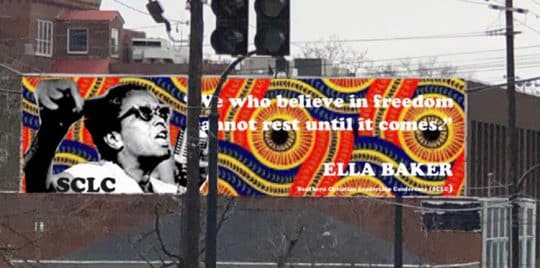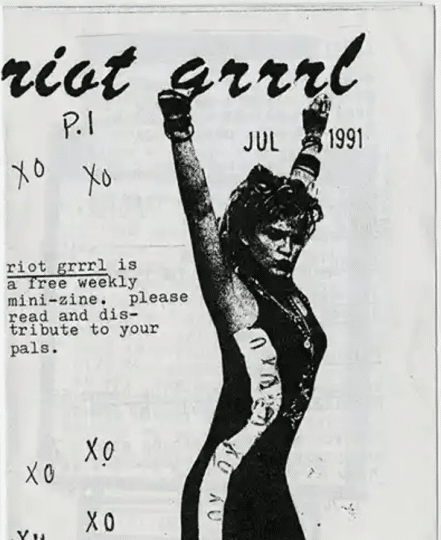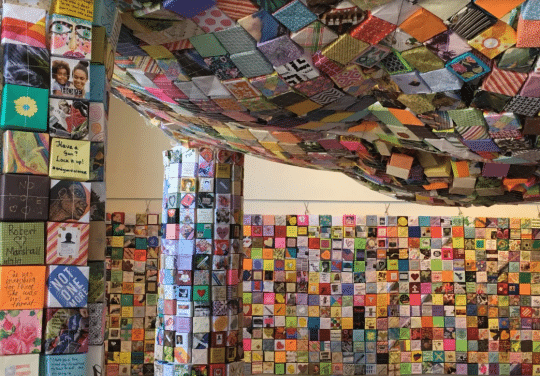By Iliana Flores-Dumond
Think back through your life: Has there ever been a piece of art that changed the way you think? Art is a kind of universal language that translates messages across time, cultures, and spaces. Some of the most common messages sent through art are messages of resistance, resilience, and power. In fact, art that sends powerful messages of resistance is often referred to by a specific name: artivism.
Artivism is the practice of making art that focuses on underrepresented narratives, sends a message of resistance from oppression or hate, and is used to advocate for change. The term artivism was first coined in the 1970’s and includes nearly any form of art from murals to performance art to gallery exhibits. Some of the earliest examples of artivism come in the form of zines, or handmade, self-published print media that are usually in the form of a small magazine or booklet. Zines can be made with virtually anything, making them a very affordable way to produce art and a way to distribute media without relying on galleries or museums to serve as a platform for the work. Historically they have been used as a tool by marginalized communities to spread messages of resistance and solidarity.

Atlanta street mural by Charmaine Minniefield. Image from: https://www.crmvet.org/images/imgart.htm.
Zine-making really gained momentum in the 1970’s after the invention of the xerox machine, which allowed zine makers to produce zines in mass quantities at a very low cost. This increased the accessibility of the medium and allowed zines to reach a wider audience. Zines were initially used in the punk rock scene, creating discussion about aspects of society like sexism, racism, and homophobia within the music industry and beyond. Some of the most famous examples of zine makers arose out of the scene including Riot Grrl and the Queercore movement. Riot Grrl was an underground feminist punk movement that made political zines to spread their feminist manifesto in a male-dominated industry. Queercore was a movement that began in the 2000’s to celebrate queer identities where they were not widely accepted. Zines were used as a tool to advocate for inclusivity and resist the stereotype that rock music was made only for heterosexual, predominantly white men.

Riot Grrrl no. 1, Molly Neuman and Allison Wolfe, July 1991. Image from: https://www.theguardian.com/music/gallery/2013/jun/30/punk-music.
To this day, zines continue to uplift narratives of people of color and LGBTQ+ people and generate discussion on issues in communities around the country. Zines can discuss any topic and be distributed widely, making them the perfect method to advocate at every level for any kind of change. Zines are particularly useful to groups like young people, who may not have access to the same resources as adult advocates. Zines can be a powerful way for young people to use their voice and address the issues affecting them the most, especially today when issues of LGBTQ+ discrimination, censorship in schools, and attacks on honest history are happening in schools across the state.

An exhibit at the Multnomah Arts Center in Portland, Oregon representing every person shot in the first 3 months of 2018.
Image from: https://www.yesmagazine.org/social-justice/2019/09/11/gun-violence-activism-art.
Some tangible examples of artivism include the activities at the Our State, Our Stage advocacy event we hosted last March. Dozens of young advocates from across Texas came to the Capitol and used printmaking, origami, poetry and song to make their visions of Texas known. Young Texans have also been using zines to create a counter narrative that uplifts the power of reading in the midst of ongoing book bans across the state.
The creative minds of youth are not only capable of imagining a better future for Texas, but they are also capable of using that imagination to make art that changes the state for the better.
If you love to make art and want to try zine-making as a mechanism to make change, we encourage you to check out our zine template here and make a zine about the right to read! You can send these to your local school board or even your representatives to educate them on why the freedom to read is so important to you.
Author

Iliana Flores-Dumond
Youth Civic Education and Engagement Intern, Children’s Defense Fund – Texas
